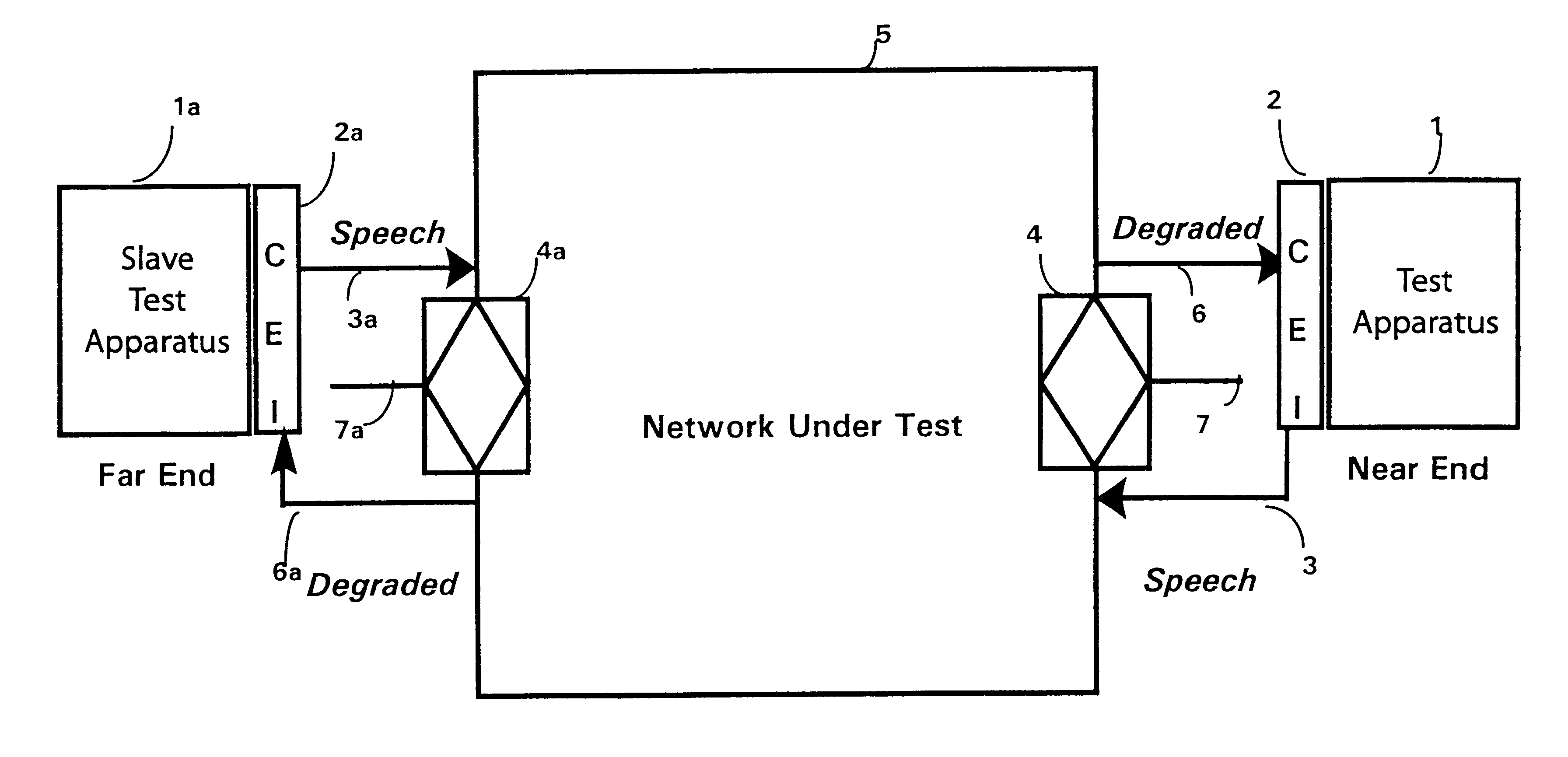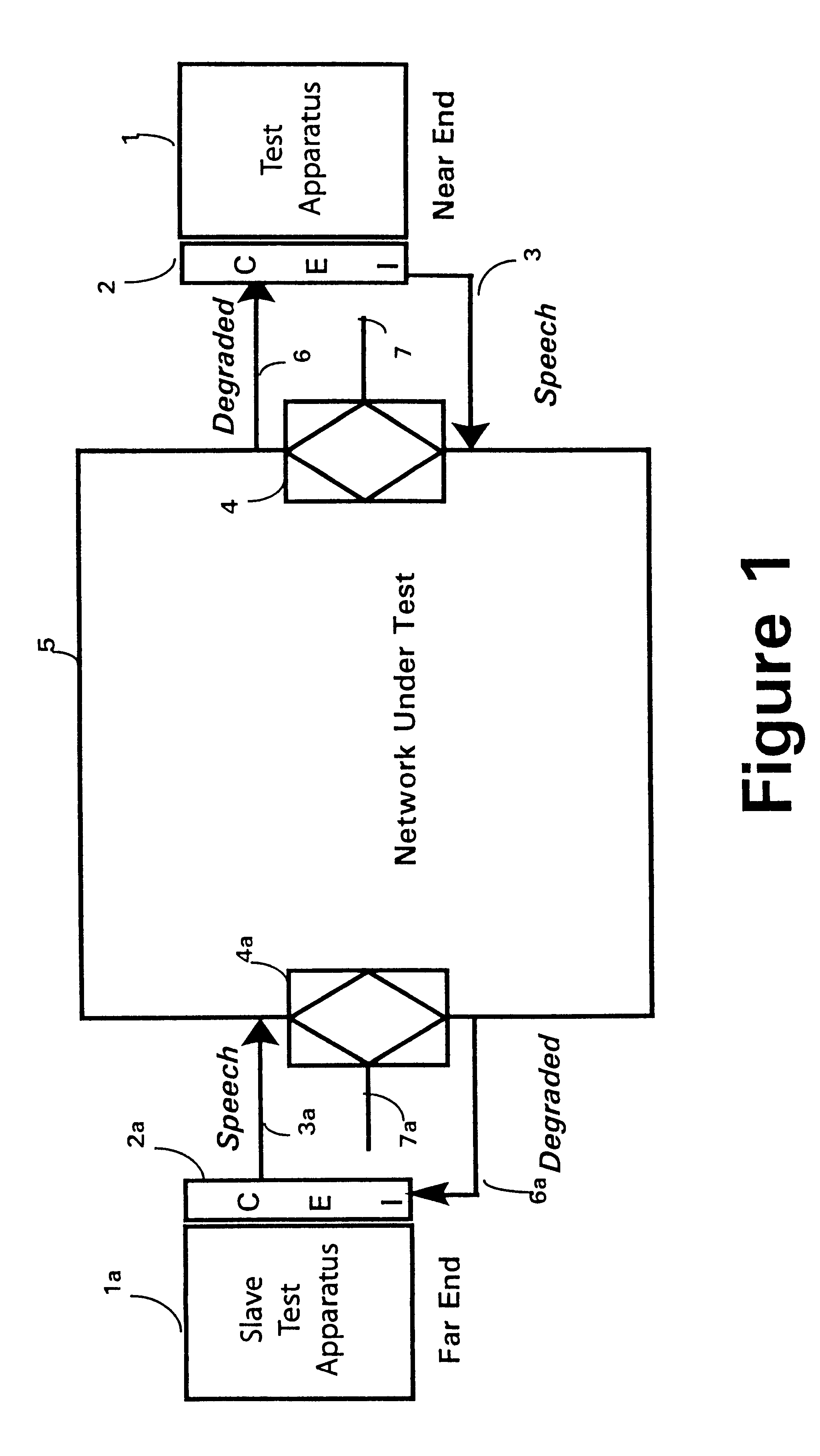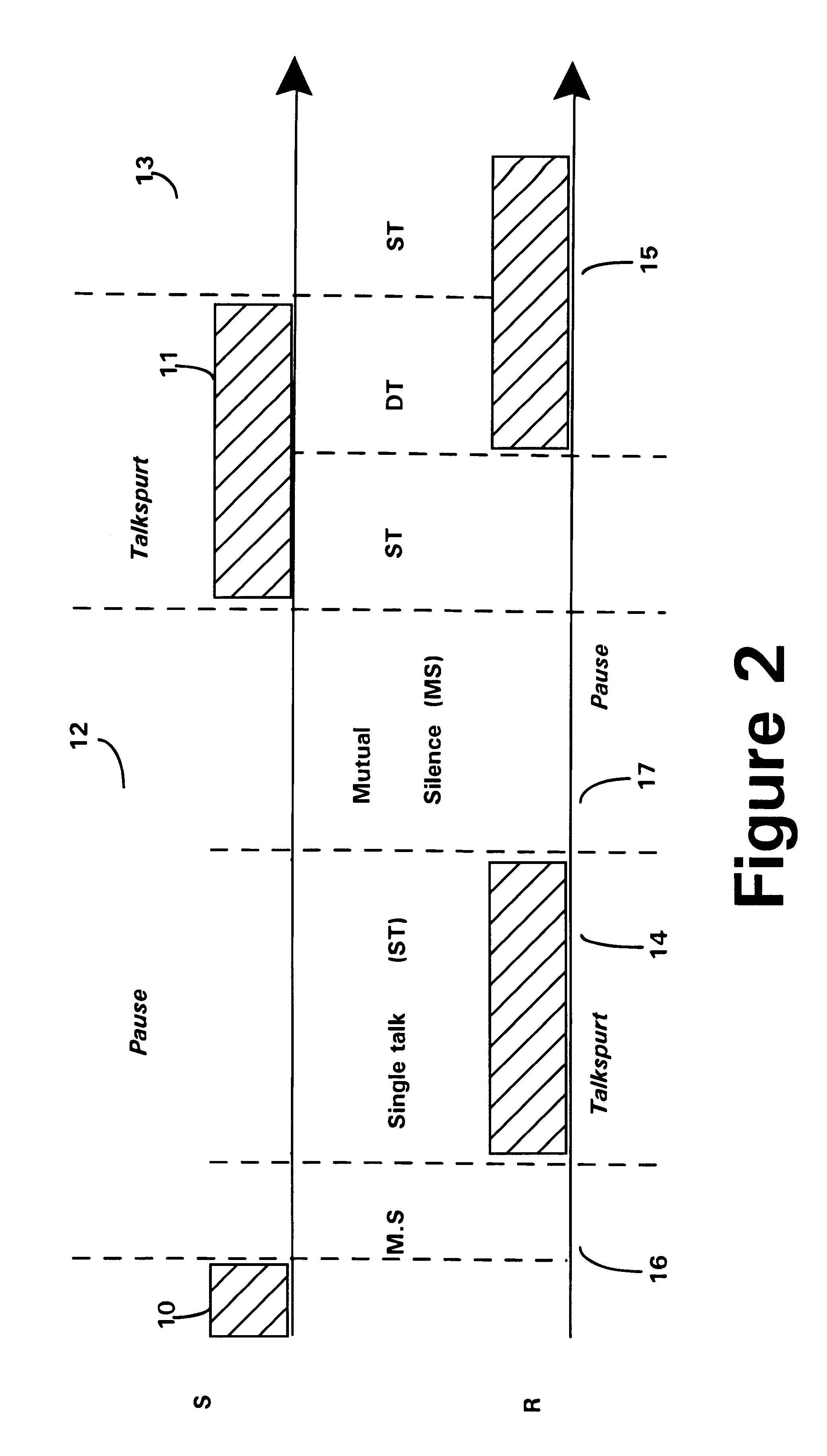Measurement of signal quality
a technology for measuring signal quality and telecommunications equipment, applied in electrical equipment, substation equipment, surveillance/monitoring/testing arrangements, etc., can solve problems such as a number of complications, a shortening of the measurement time, and the loss of the beginning of a user's utteran
- Summary
- Abstract
- Description
- Claims
- Application Information
AI Technical Summary
Problems solved by technology
Method used
Image
Examples
Embodiment Construction
FIG. 1 schematically shows a test set-up according to the invention. A test apparatus 1, to be described in more detail later, is connected through a customer equipment interface 2 and a two-way connection 3, 6 to a junction point 4, and thereby to a network under test 5. At a remote junction point 4a in the network 5 a further two-way connection 3a, 6a, connects to a further customer equipment interface 2a and thus to a slave test apparatus 1a. The respective test apparatuses 1; 1a, the customer equipment interfaces 2, 2a; and the links 3, 6; 3a, 6a to the network 5 under test are substantially identical at each end.
As shown, each test apparatus 1, 1a is connected to the four-wire side of a two-wire / four-wire junction point 4, 4a in the network, and the two-wire connections 7,7a; junction points 4, 4a; and customer equipment are all simulated by the customer equipment interfaces 2, 2a. However, in alternative arrangements one or both customer equipment interfaces 2,2a may be connec...
PUM
 Login to View More
Login to View More Abstract
Description
Claims
Application Information
 Login to View More
Login to View More - R&D
- Intellectual Property
- Life Sciences
- Materials
- Tech Scout
- Unparalleled Data Quality
- Higher Quality Content
- 60% Fewer Hallucinations
Browse by: Latest US Patents, China's latest patents, Technical Efficacy Thesaurus, Application Domain, Technology Topic, Popular Technical Reports.
© 2025 PatSnap. All rights reserved.Legal|Privacy policy|Modern Slavery Act Transparency Statement|Sitemap|About US| Contact US: help@patsnap.com



